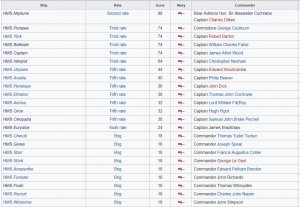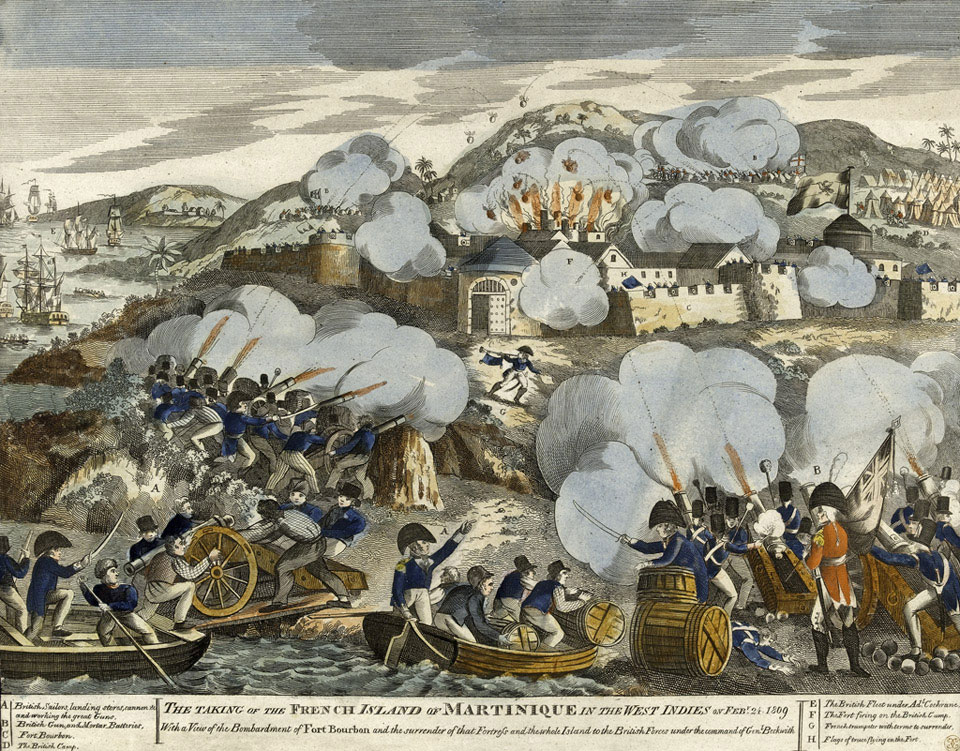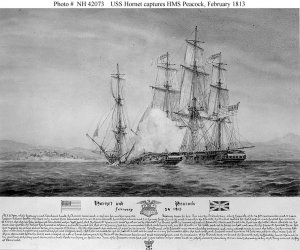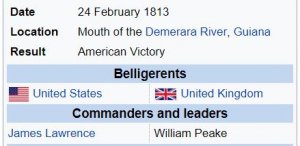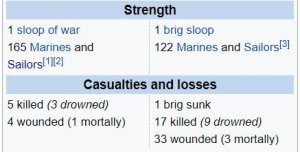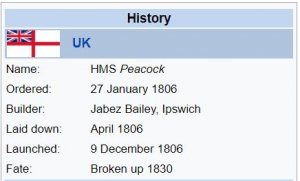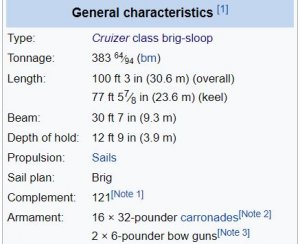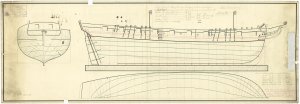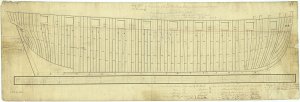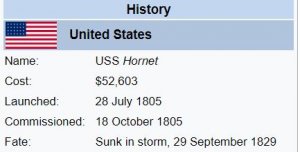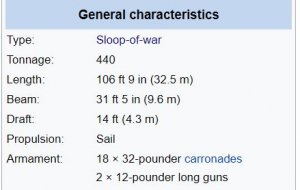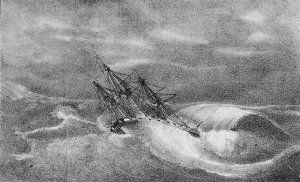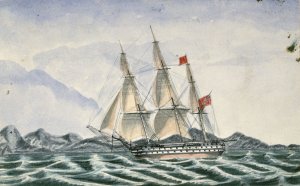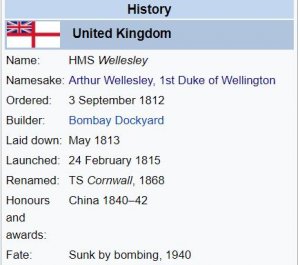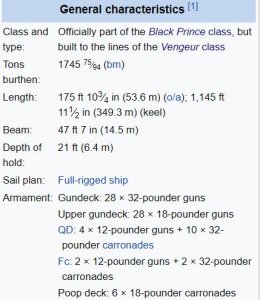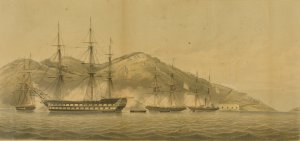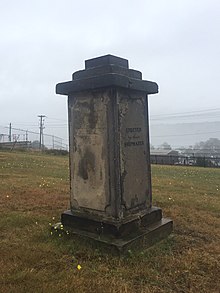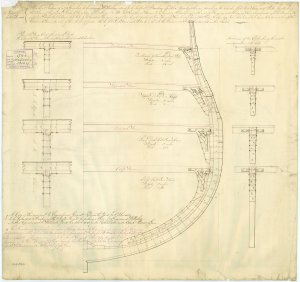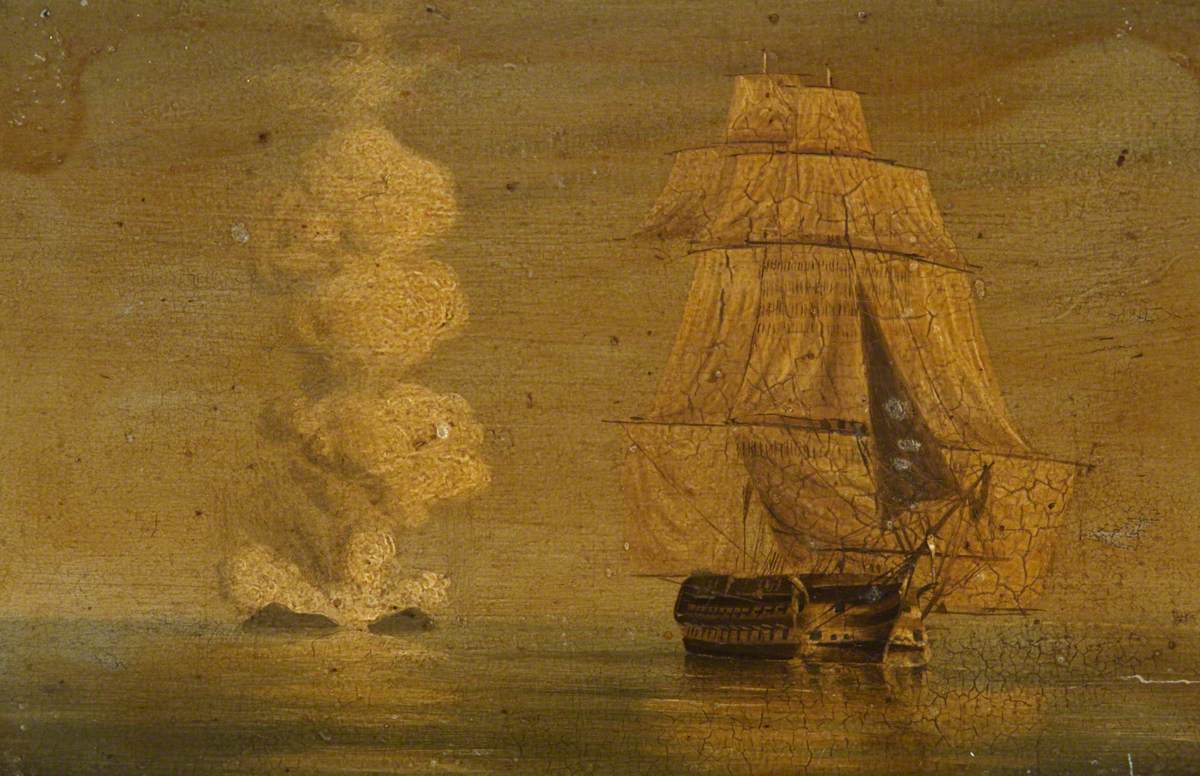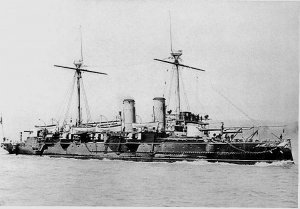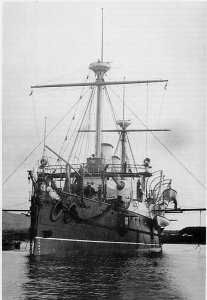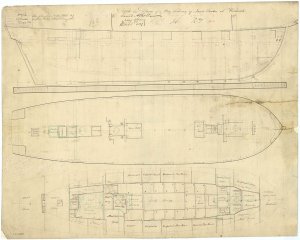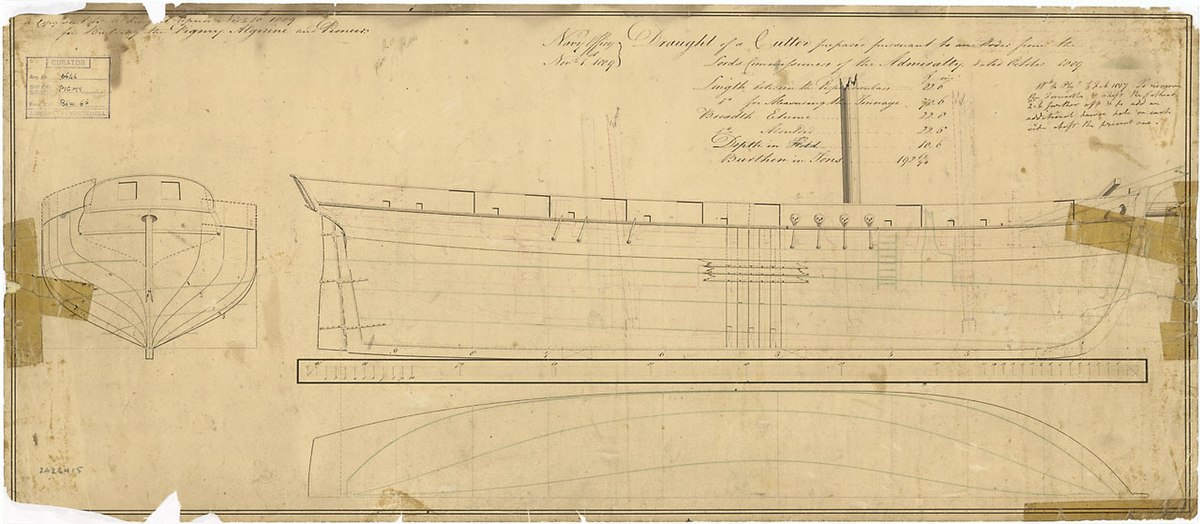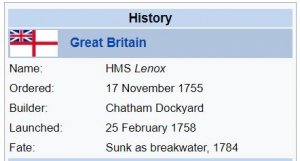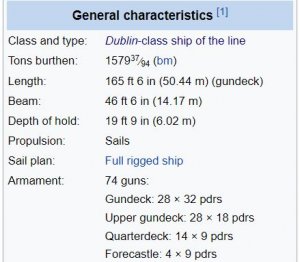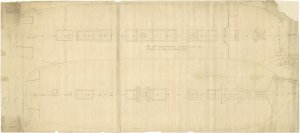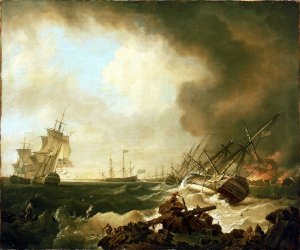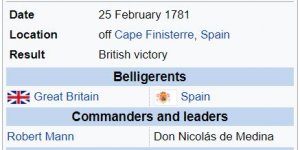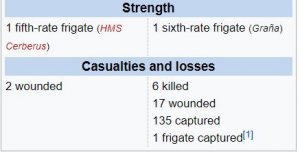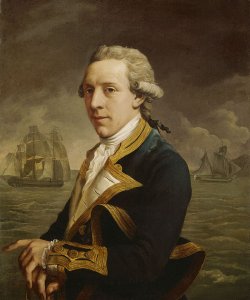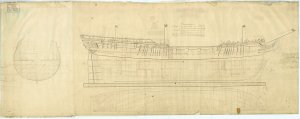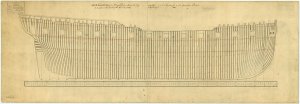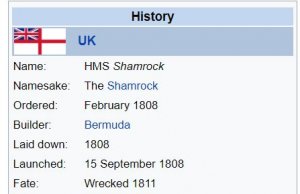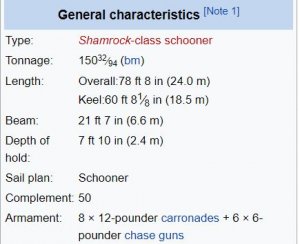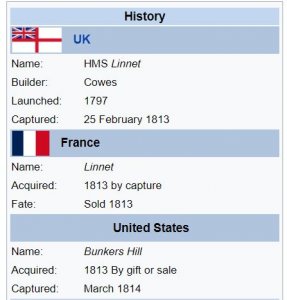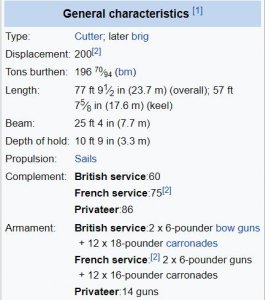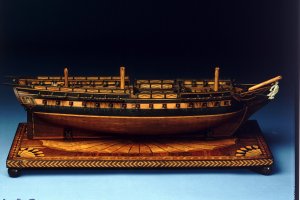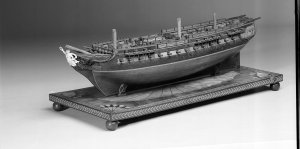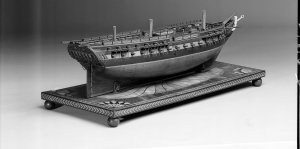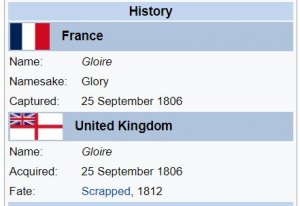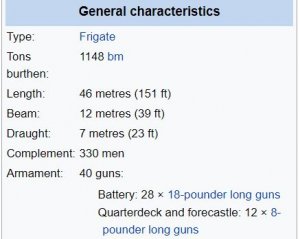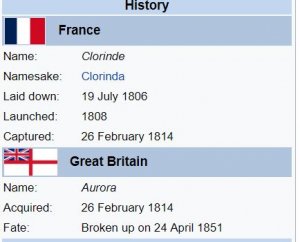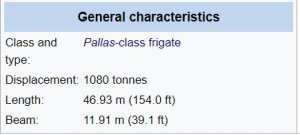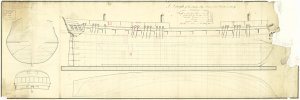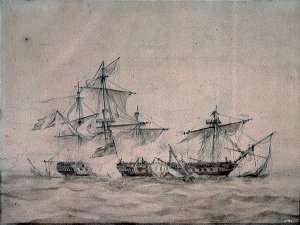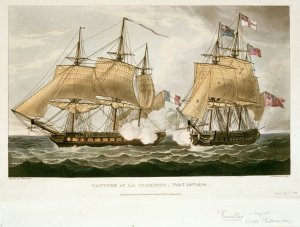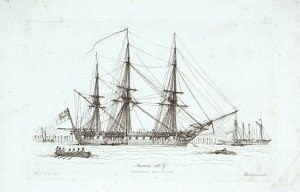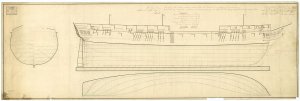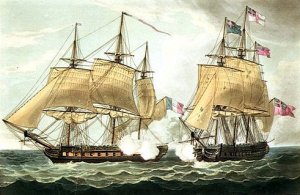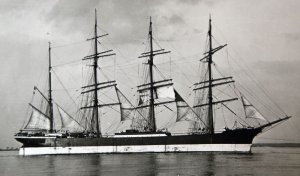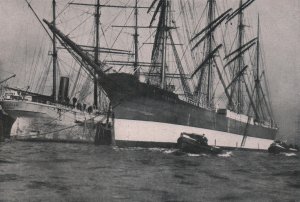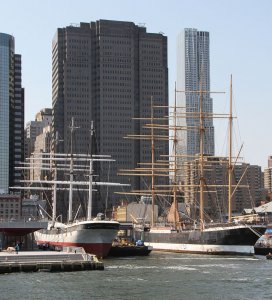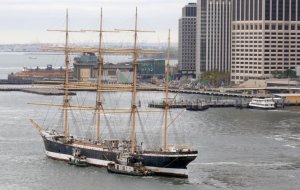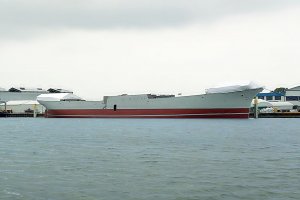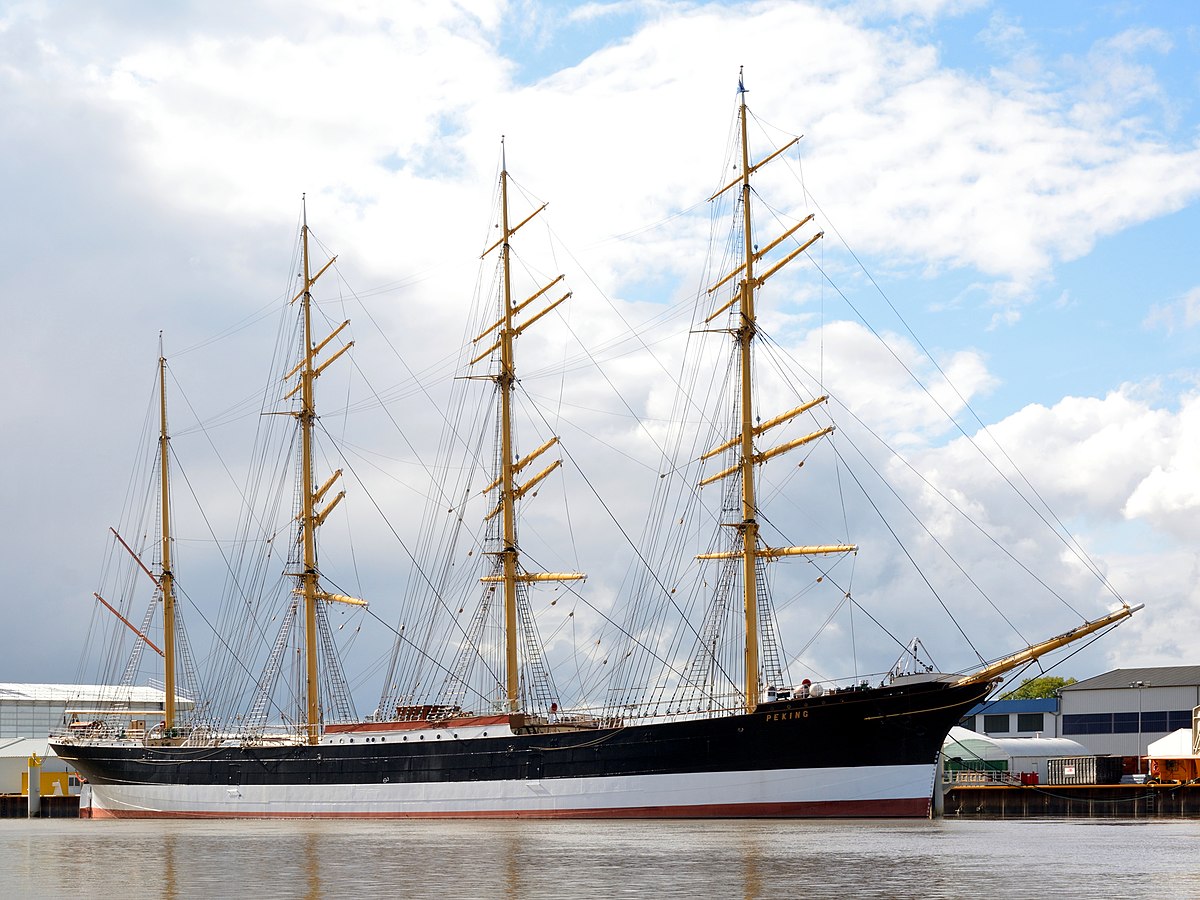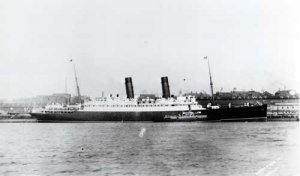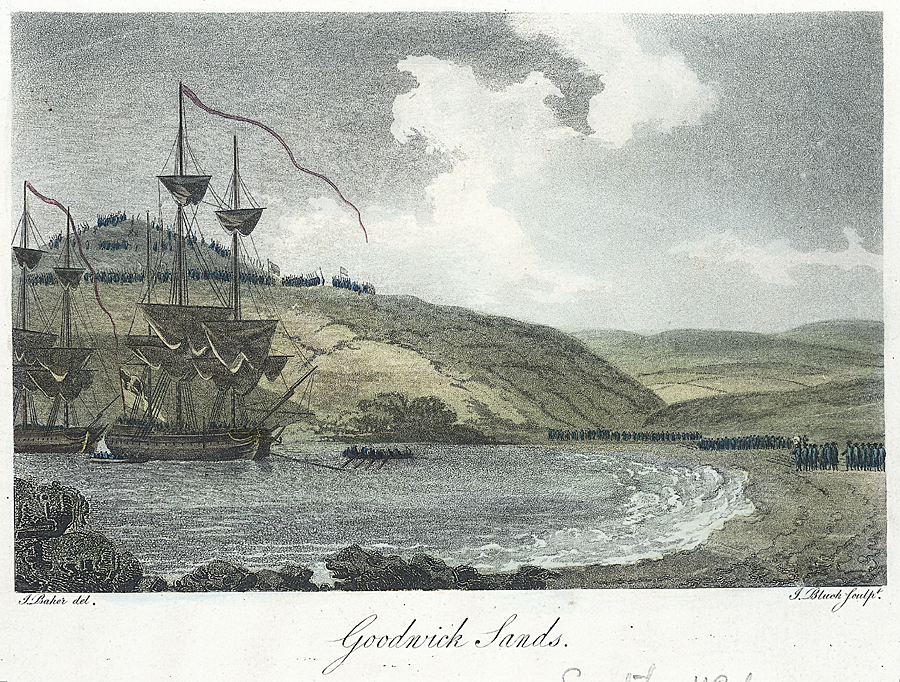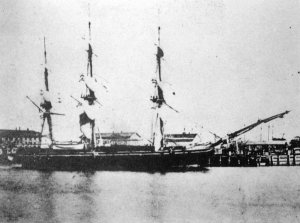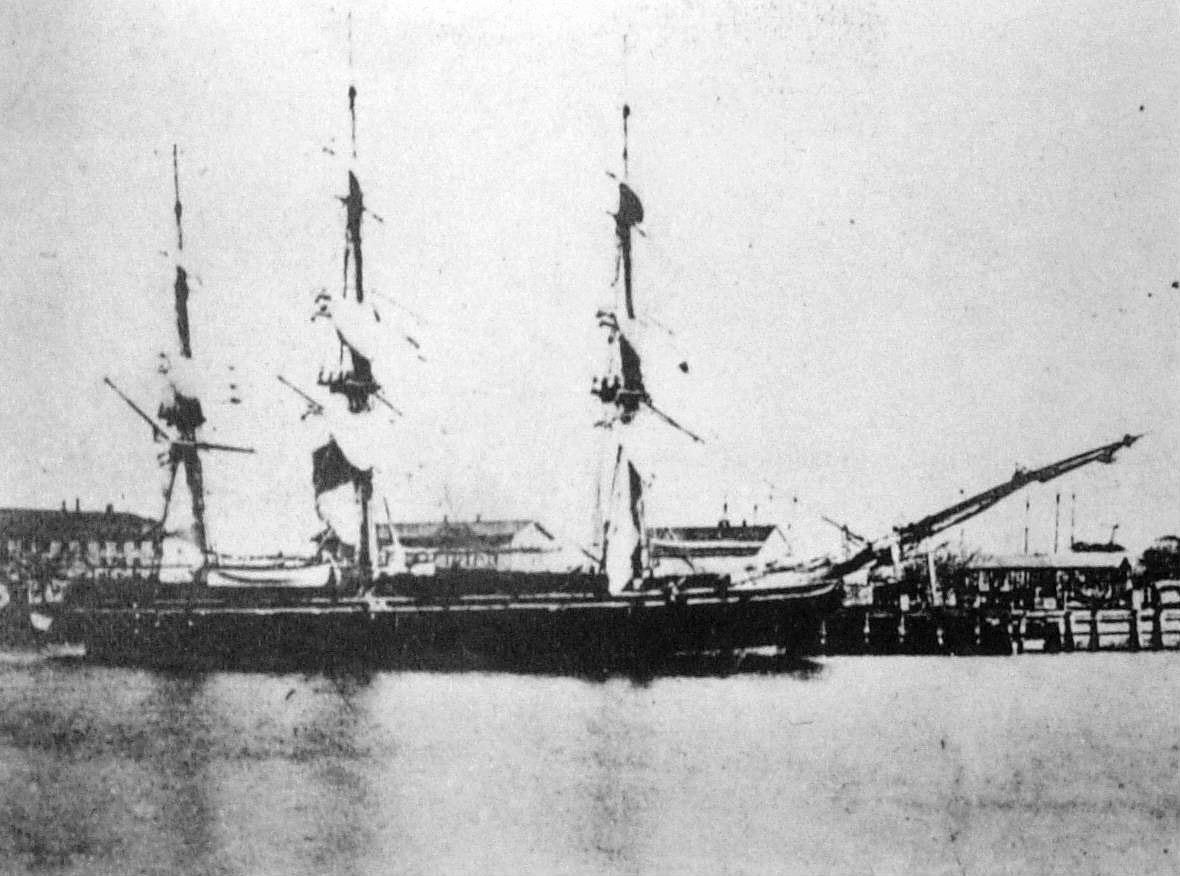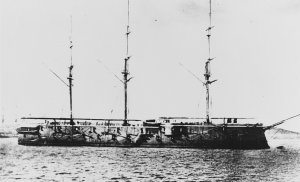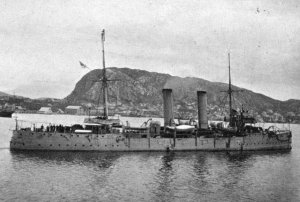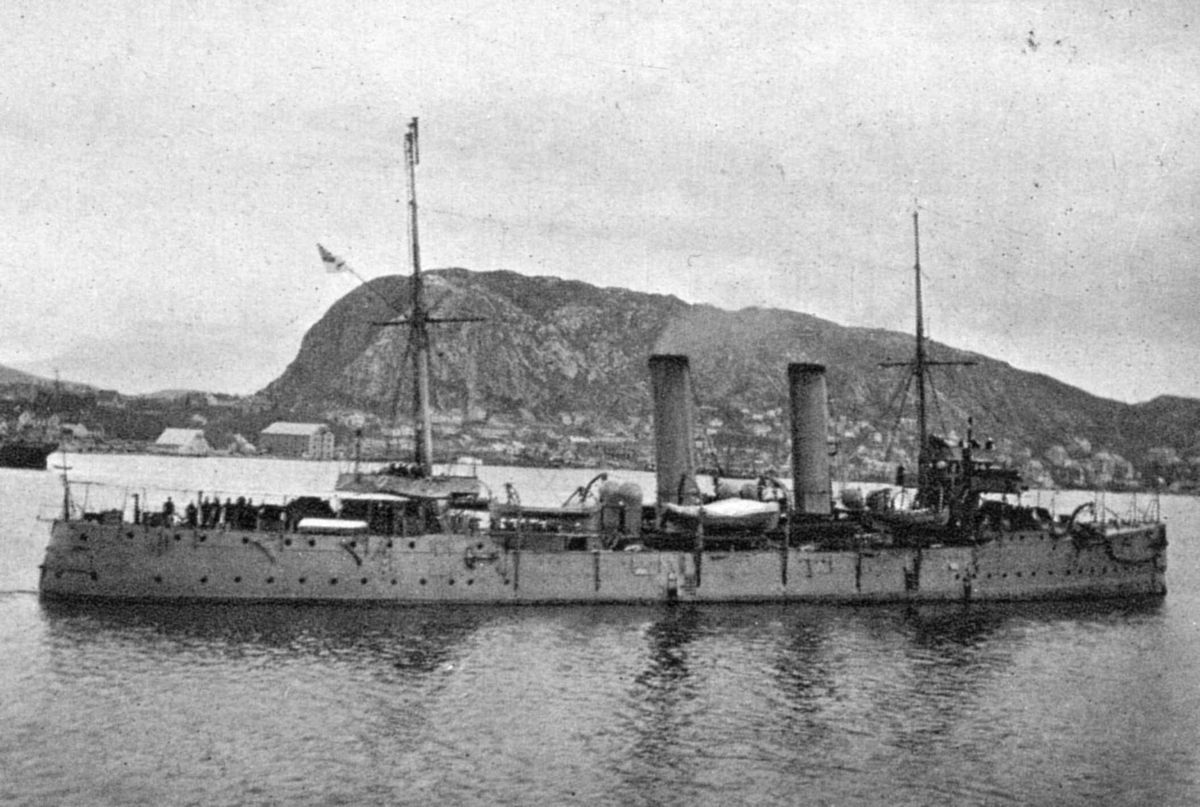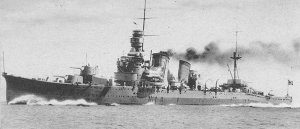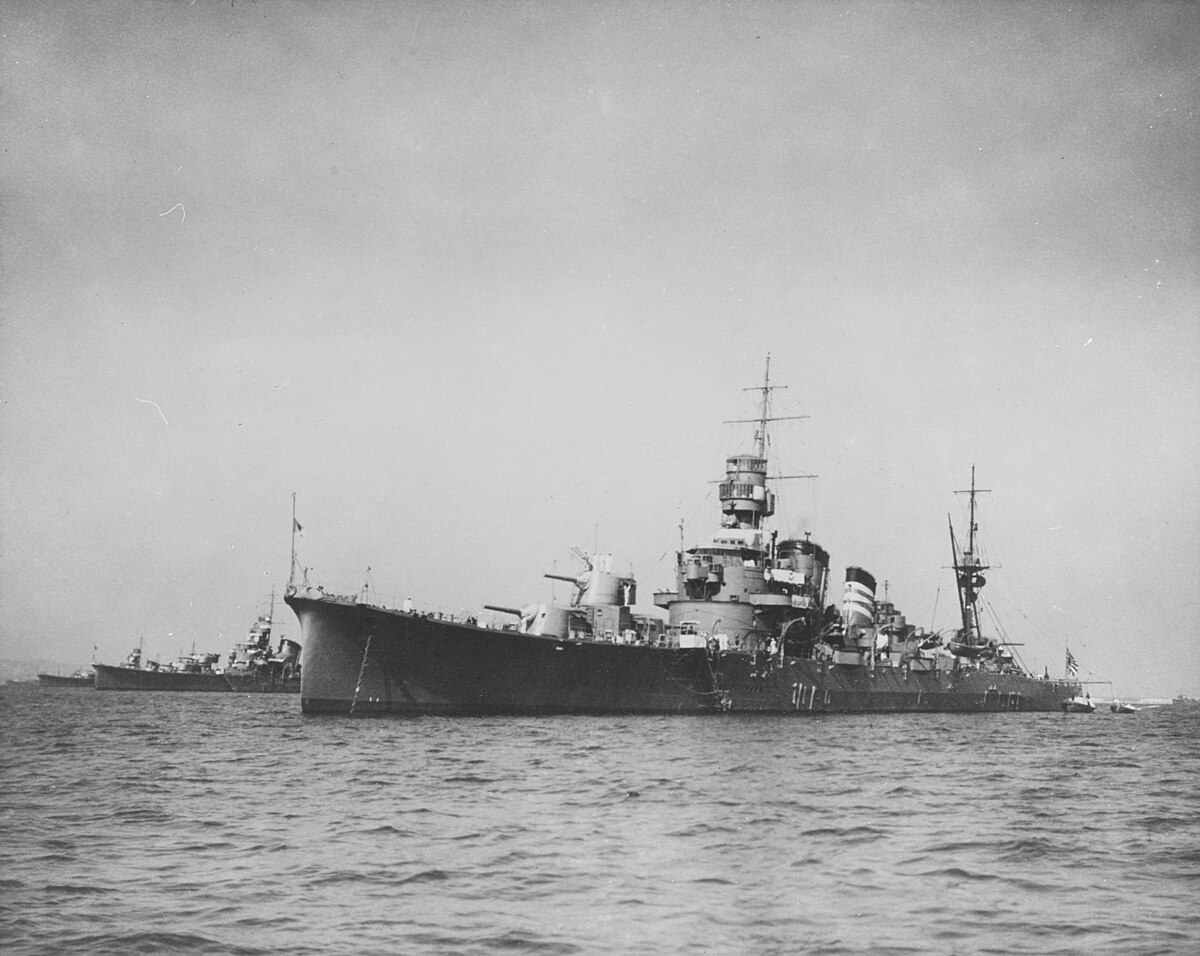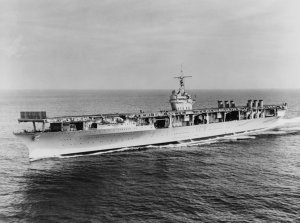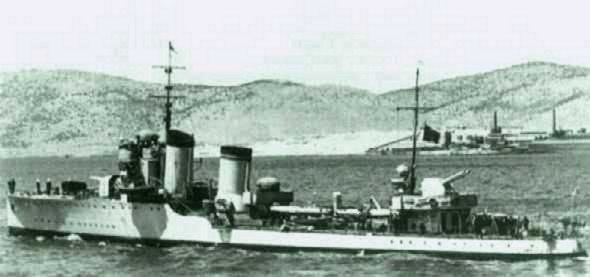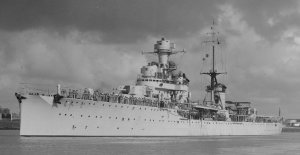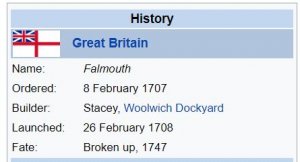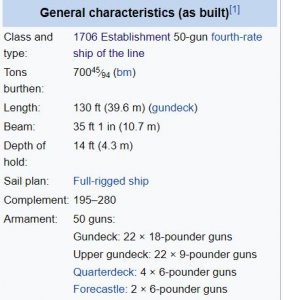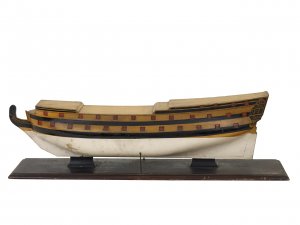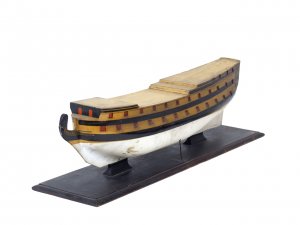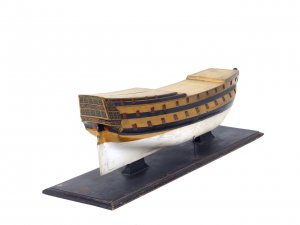Today in Naval History - Naval / Maritime Events in History
24 February 1875 – The SS Gothenburg hits the Great Barrier Reef and sinks off the Australian east coast, killing approximately 100, including a number of high-profile civil servants and dignitaries.
The
SS Gothenburg was a
steamship that operated along the British and then later the Australian and New Zealand coastlines. In February 1875, she left
Darwin, Australia
en route to
Adelaide when she encountered a
cyclone-strength storm off the north
Queensland coast. The ship was wrecked on the
Great Barrier Reef north-west of
Holbourne Island on 24 February 1875. Survivors in one of the
lifeboats were rescued two days later by
Leichhardt, while the occupants of two other lifeboats that managed to reach Holbourne Island were rescued several days later. Twenty-two men survived, while between 98 and 112 others died, including a number of high-profile civil servants and dignitaries.
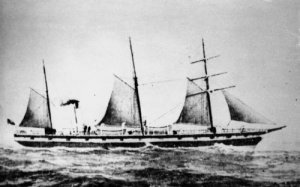 Description and history
Gothenburg
Description and history
Gothenburg was commissioned in 1855 following her construction at Lungley's building yards in
Millwall, London.
[2] She was a 501-ton, 197-foot-long (60 m) vessel, with a 120-horsepower (89 kW), coal-burning engine. She was rigged as
barquentine, with her funnel set well aft between the main and
mizzen masts. She was fitted with four
lifeboats, two
port and two
starboard.
Her first owner, the North of Europe Steam Navigation Company, operated her between Irongate Wharf, near the
Tower of London, and
Sweden.
[4] In 1857, she was acquired by the
Union Castle Line and renamed as
RMS Celt. In June 1862, McMerkan, Blackwood and Co. of Melbourne purchased her for the Australian trade and in that year she made a protracted voyage from England to Australia by sail. She was one of the most modern vessels working around the Australian
coastline in the 1860s, and became a popular ship as she was considered reliable. After many years on the Australia-New Zealand run, her owners transferred her to the Australian coastal service.
In 1873, she was lengthened and refitted in Adelaide to enable longer distances under steam and greater passenger and cargo capacity. Following her modifications, her name reverted once again to
Gothenburg.
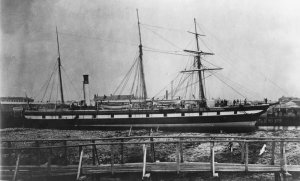
SS
Gothenburg docked at
Port Adelaide wharf after her lengthening in 1873.
In November 1874, several shipowners were contracted for two years from the South Australian government to provide ten round trips between the colonial capital of Adelaide and its furthest outpost,
Port Darwin. Port Darwin was feeling the effects of a
gold rush at
Pine Creek and growing quickly as a trade post with the
Dutch East Indies. However, all the local banks sent their money, together with government paperwork and the
Royal Mail, around the east coast to Adelaide. On successful completion of each voyage, the South Australian government would pay the owners £1000 sterling.
When
Gothenburg left Port Darwin on Tuesday, 16 February 1875, Captain Robert George Augustus Pearce was under orders to make best possible speed. Pearce had been her captain on the Adelaide-Darwin run for some time and had built up a solid reputation. He was a man of the sea, a man of sobriety and kindness and was well respected by his fellow sea captains.

Captain R.G.A. Pearce
Amongst the approximately 98 passengers and 37 crew (surviving records vary) were government officials, circuit court judges, Darwin residents taking their first
furlough and miners. Also aboard was the French
Vice Consul Edouard Durand and
James Millner, the medical officer in
George W. Goyder's 1869
expedition to found the first colony at Port Darwin. There were also several prisoners aboard, bound for the Adelaide jail. Locked in the Captain's cabin was approximately 93 kilograms (3,000 ozt) of gold valued at £40,000 consigned to the
ES&A Bank in Adelaide. (approx US$2.6 million in 2008). Durand reportedly also carried a tin box with him containing gold
sovereigns and coins worth in excess of £3,000.
In three days of fine weather,
Gothenburg travelled 1,500 kilometres (900 mi) from Palmerston (Darwin) to
Somerset on
Cape York. The weather began to worsen so the ship stopped to take on
ballast at Somerset. While she was anchored, conditions deteriorated to a point where both anchor chains parted. After the loss of the anchors,
Gothenburg was forced to prematurely steam out 13 kilometres (7.0 nmi) because of strong currents; at that point, she brought up for the night.
Two days later, Tuesday 23 February,
Gothenburg passed
Cooktown at about 2:00 pm. The wind and rain severely increased and cloud cover became so thick it blocked out the sun. Despite this, she continued the journey south into worsening weather, in a deep water passage between the North
Queensland coastline and the
Great Barrier Reef, known as the inner route. Although taking this route provided some protection from the open sea, captains had to navigate and thread their way through a number of then uncharted reefs. All passengers and crew expected to be in
Newcastle on Sunday evening for a scheduled stopover.
Shipwreck
On the evening of 24 February 1875, the ship was still heading south in almost
cyclonic conditions with fore, top and mainsails set and the steam engines running at full speed. Flooding rains lashed the entire
Queensland coast and Captain Pearce reportedly could not see land or sun. At approximately 7:00 pm, and for reasons undetermined, he altered course and shortly afterwards, at full speed (11 to 12
knots), hit a section of the
Great Barrier Reef at
low tide 31 miles (50 km) north west of
Holbourne Island.
Gothenburg struck with such force that she was left high up on the reef. Immediately, an order came out to lower the sails. At first, there was no
panic and many passengers returned to their cabin bunks expecting
Gothenburg would come off the reef at
high tide.
In an attempt to refloat her, Captain Pearce ordered
Gothenburg to be lightened forward. Water casks used as ballast and passengers were positioned
aft in an endeavour to refloat her as the tide rose, but without success. Finally, a fatal attempt was made to refloat her, by reversing the engine hard. The vessel came half off the reef, but holed herself badly and then slewed
broadside to the waves, in a much worse position. However, with the tide rising and some cargo now being dumped overboard, all aboard still expected
Gothenburg to float free. With strong winds changing direction and seas increasing, the boiler fires were extinguished by water rising through the damaged
stern. Around midnight, the chief engineer came on deck to report that the engine room was flooded and the engine was of no further use. With heavy seas now rushing down hatchways and into the cabins,
Gothenburg was doomed and Captain Pearce was forced to admit that the situation had become desperate.
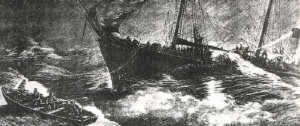
Steamer
Gothenburg
The storm made launching the
lifeboats almost impossible. At about 3:00 am, Captain Pearce ordered the two
port lifeboats lowered, each with four crew on board. While being passed astern one of the boats broke the
painter and became adrift. Her crew tried hard to pull up to the ship's side, but it was impossible in the heavy
squall. The other was accidentally let go and both boats, in heavy seas, were unable to be retrieved.
At about 3:30 am on Thursday, 25 February,
Gothenburg continued to heel over. The deck became so steep that passengers and crew had to climb over the rails to get on her side.
[6] At about 4:00 am, the two remaining
starboard lifeboats were lowered and were rushed by the passengers. One starboard lifeboat, crammed with women and children, capsized when others tried to board it. Some half dozen men righted her in the water, but, damaged and without oars, food or water, it quickly drifted away and was never found. The second starboard lifeboat also capsized when the sea crashed over, washing all the occupants into the sea. One passenger recalled the sea on the
downwind side of the ship being covered with human heads bobbing up and down like corks. Five or six men and one woman climbed onto the upturned
hull. The boat was still connected to its
painter, but it was unable to be recovered from the heavy sea and wind which swept the woman off and drowned her. A passenger, John Cleland, swam to the connected, but upturned lifeboat and further secured it with a rope tied to
Gothenburg. In less than fifteen minutes, nearly 100 people had drowned; washed away or trapped in their water-filled cabins.
[6] By this time, several sharks were circling the wreck.
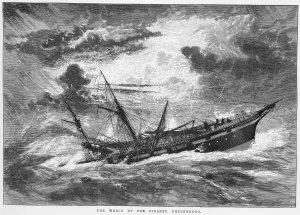
Artist impression of the wreck of the steamer
Gothenburg
Those still on board
Gothenburg tried to cling to the rigging, but throughout the early morning of 25 February, several more people were drowned after they were swept overboard by large broadside waves. Many passengers associated with the gold diggings were unwilling to let go of their gold and money belts, as it was probably their life savings; these individuals insisted on keeping them tied and once overboard reportedly drowned very quickly.
Survivors
By morning of the 25 February, only the masts were visible protruding from the water, with 14 people clinging to the
rigging, where they remained for the next twenty four hours in cyclonic weather. At low tide,
Gothenburg sank stern first and the wreck fell apart. However, the remaining starboard lifeboat, which had capsized, was still held by her
painter and the rope attached by Cleland. At first
light on 26 February the weather eased and the survivors managed to right the boat and bail it out; they prepared a makeshift sail and paddled for the mainland. About seven hours later they realised they could not make mainland, so they altered course for an island that could be seen in the distance. When they arrived, they were met by four of the crew from one of the port lifeboats. Their lifeboat had been severely damaged on the rocks on the opposite side of the island in an attempt to land there the day before.
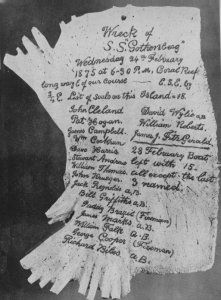 Gothenburgs'
Gothenburgs's Turtle Shell Roll
The other port lifeboat, with four crew on board, was picked up by the
steamer Leichhardt at an island at the entrance to
Whitsunday Passage two days after the disaster. The steamer immediately reversed course back towards the wreck, which she reached at approximately 3.30 pm on Friday, 26 February.
Gothenburg was a complete wreck; the funnel was gone and she had sunk to the eyes of the lower rigging.
Leichhardt's Chief Officer and four hands went alongside, but nothing other than her masts could be seen above the water except for the body of a naked man floating nearby. They assumed the other victims had been taken by sharks.
Leichhardt searched for survivors until last light and then made way for
Bowen where the alarm was raised.
At
Holbourne Island, the other 18 survivors were living off raw bird's eggs and rain water that had pooled in the island rocks. Because rescue was uncertain, they
engraved ship details and their names on the
concave side of a large turtle shell, in the hope that it would be found in the future. On Sunday, 28 February 15 of them set off in the starboard lifeboat for an island about 20 miles away to the south, which appeared to be closer to the main shipping lane. A rescue ship, sent looking for survivors, picked up the group and took them safely to Bowen. Another rescue ship,
Bunyip from Townsville, subsequently returned to Holbourne Island and rescued the three remaining survivors.

en.wikipedia.org
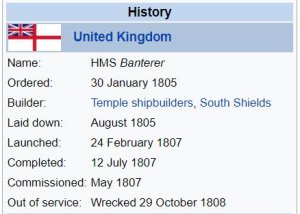
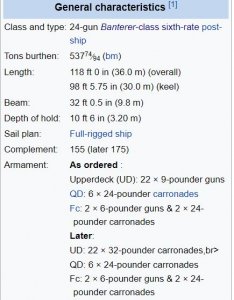

 en.wikipedia.org
en.wikipedia.org

 en.wikipedia.org
en.wikipedia.org







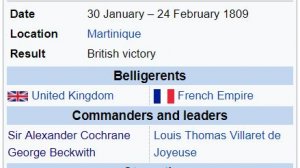
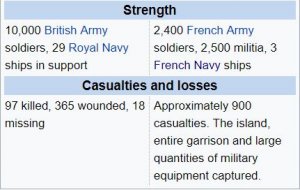


 of the poor state of Martinique's defences also reached France during the autumn of 1808. Attempts were made to despatch reinforcements and urgently needed food supplies, but on 30 October 1808 Circe captured the 16-gun French Curieux class brig Palinure. The British then captured the frigate Thétis in the Bay of Biscay at the Action of 10 November 1808. Another relief attempt was destroyed in December off the Leeward Islands and HMS Aimable captured the corvette
of the poor state of Martinique's defences also reached France during the autumn of 1808. Attempts were made to despatch reinforcements and urgently needed food supplies, but on 30 October 1808 Circe captured the 16-gun French Curieux class brig Palinure. The British then captured the frigate Thétis in the Bay of Biscay at the Action of 10 November 1808. Another relief attempt was destroyed in December off the Leeward Islands and HMS Aimable captured the corvette 